Unlike their flashy blue neighbours on the river – Mr and Mrs kingfisher – the Dipper family are easy to miss. From a distance, their bobbing brown bodies can be hard to spot in the shimmer of a fast-flowing river, the constant moving of their white breasts seemingly helping them to blend in with the torrent of water.
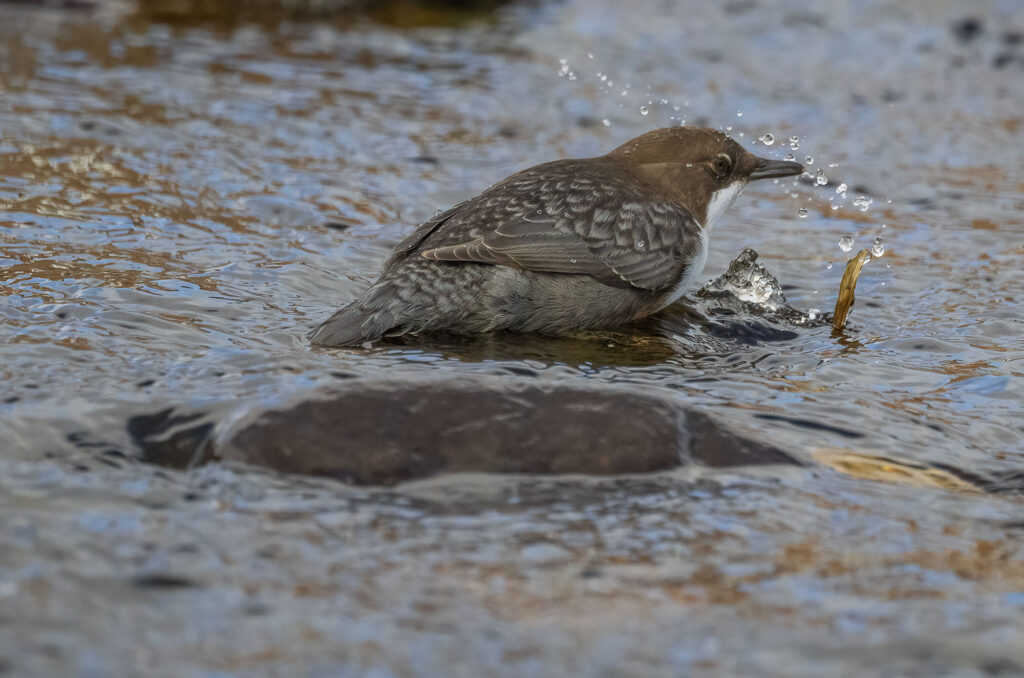
But once an individual has caught your attention, it is easy to become completely absorbed in trying to capture these fascinating and fast-moving little birds. Some scientists believe the dipper may be equally focused on us, as we watch them from the riverbank. It may be that they dip as a show of strength and to acknowledge that they have spotted a threat, and it would be pointless for a predator to try and catch them.
Dipping and diving
The truth is, we don’t know exactly why dippers dip, bob and bounce. However, we do know that the dipper has the impressive title of Britain’s only aquatic songbird, although its song can be somewhat subdued-sounding. What is truly impressive is how well it is adapted to its environment.
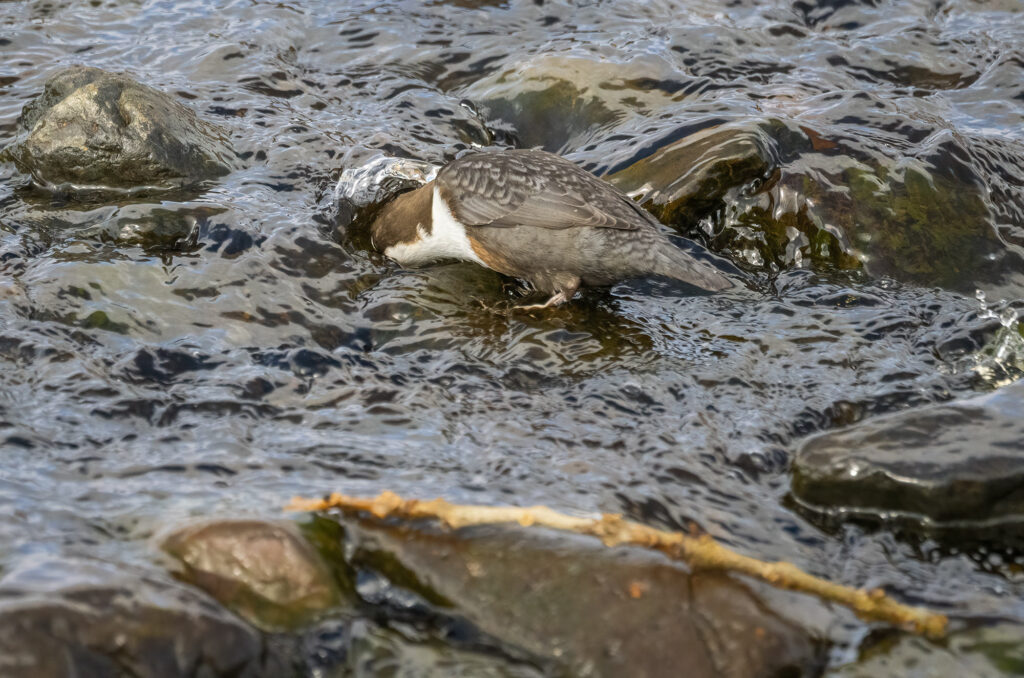
Dippers can dive underwater for up to 30 seconds at a time. They have a flap that stops water rushing up their nose, can control their lenses to improve their vision underwater and have thick plumage that they keep oiled to act as a wetsuit. Once underwater, they use their short, powerful, flipper-like wings to propel themselves along and use their long toes and strong claws to grip onto rocks and other objects. The dipper diet consists mainly of stoneflies, caddis fly larvae and other underwater invertebrates. They can walk along the river bed, picking up prey as they go.
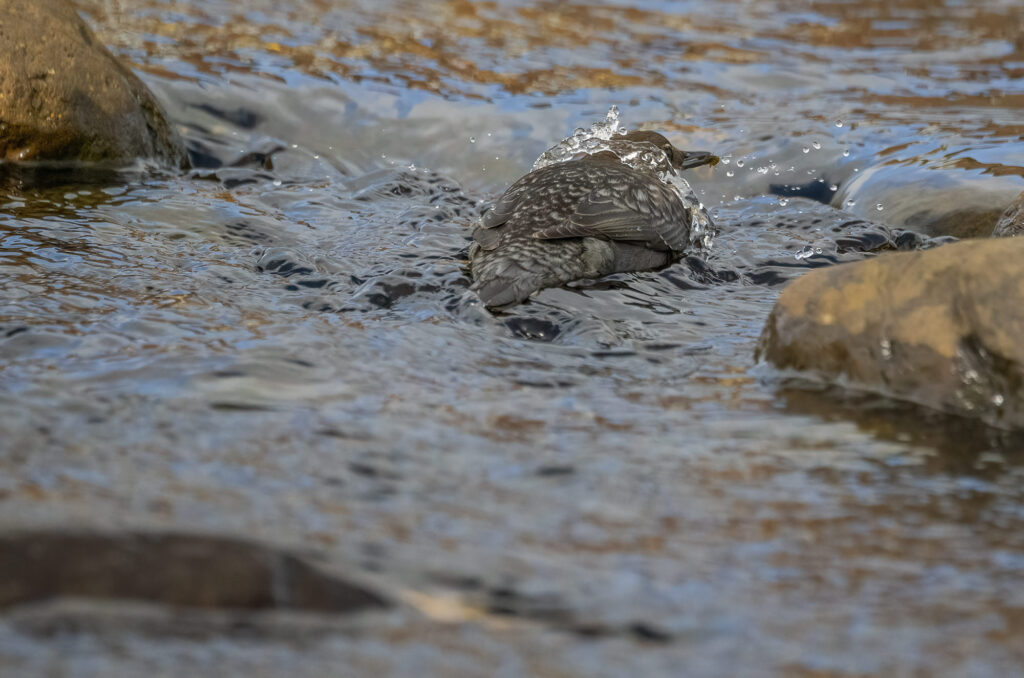
The behaviour and habitat of the dipper mean that it is an indicator species for the quality of our rivers and streams. Many caddis and mayfly larvae live only in well-oxygenated, fast-flowing rivers. If dippers appear in an area, it is a reflection (pun intended) of improving water quality. The opposite is also true – the disappearance of this species from a waterway should ring alarm bells.
Nesting sites worth noting
It has been a while since I have seen dippers nesting on our local river. A couple of years ago, it looked like they were building a nest under a bridge over the burn. These birds breed early in the year, often laying four or five eggs before the end of February, and I had spotted a bird with nesting material in March – so it seemed to fit. However, I didn’t see any fledglings after that.
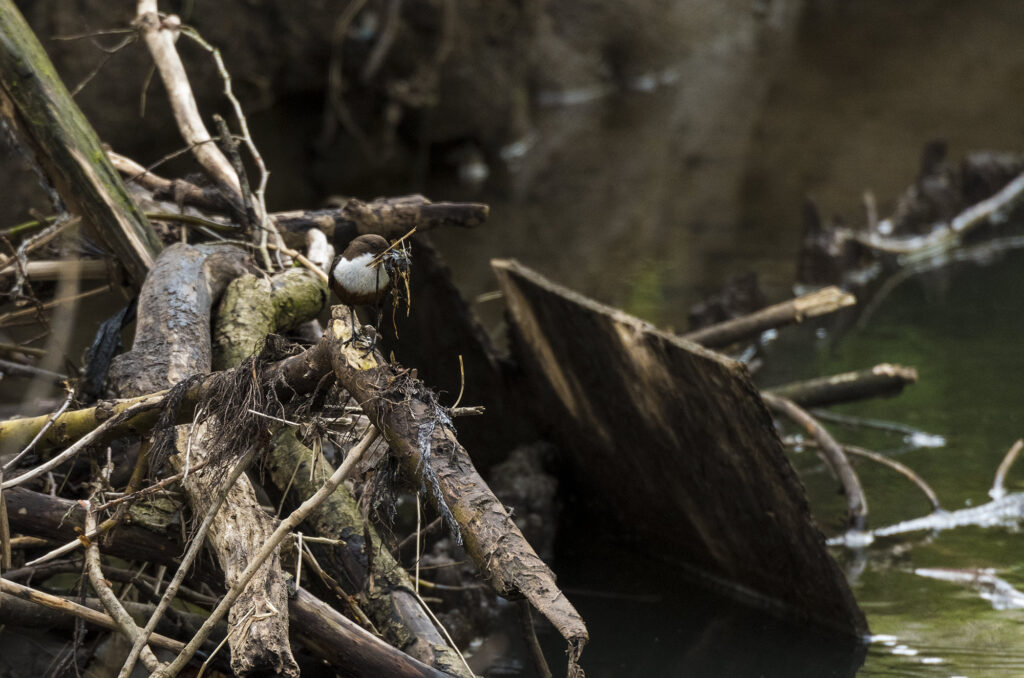
The same happened last year – I photographed another dipper carrying nesting material, but no youngsters seemed to follow. The water level in our burn varies, and it can be a dumping ground for rubbish – I’m not sure if either of these factors caused them to abandon their nests.
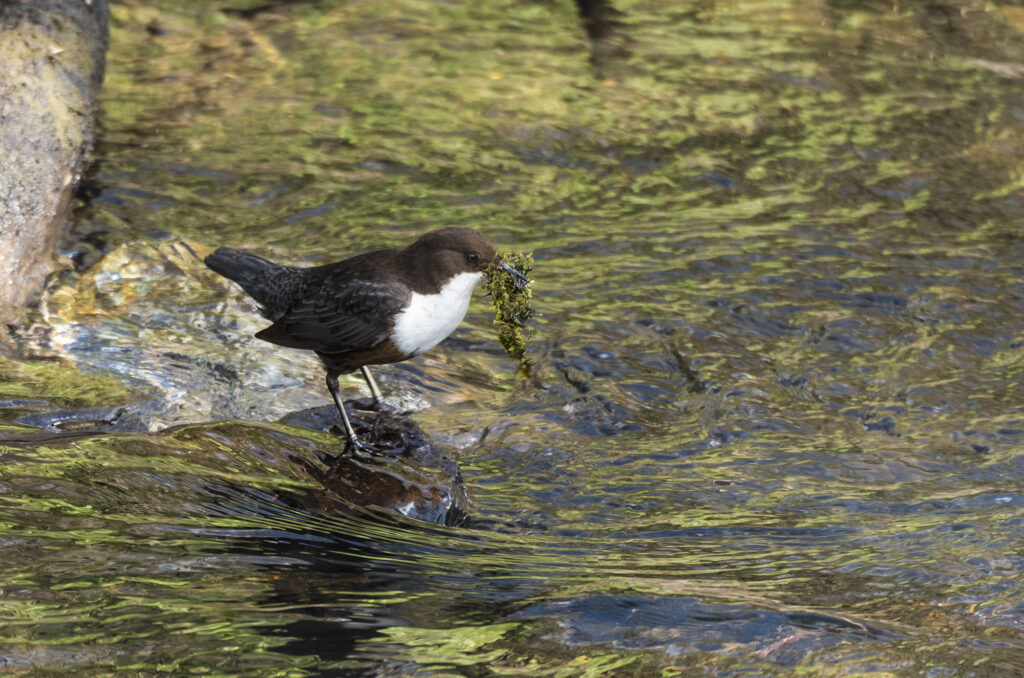
That said, keeping your eyes peeled for dippers with nesting material is a great way to establish a reliable location for photographing these charismatic birds. Look out for them carrying moss, leaves and other vegetation behind waterfalls, into stone walls or below bridges, as these are the sorts of spots they will choose to raise their family. Remember to keep your distance from the nesting site to avoid disturbing the birds.
Badly-lit birds
During the photography opportunities with the local dippers, I quickly learned that they love a low-light location. So, if you are heading out to your dipper spot, my first tip would be to have your ISO cranked up higher than you might like. Even if the river or stream is well-lit, I often find that my subject will find the one rock or branch that is in shadow. I usually use a fast shutter speed to capture sharp dipper images. You can obviously experiment with a slower shutter speed if you want to try to capture some of their signature dipping motion or the movement of the water around them. Depending on the location, you may also want to use a tripod to enable sharper shots, but be careful when placing it in the stream or river, as this could disrupt the water flow.
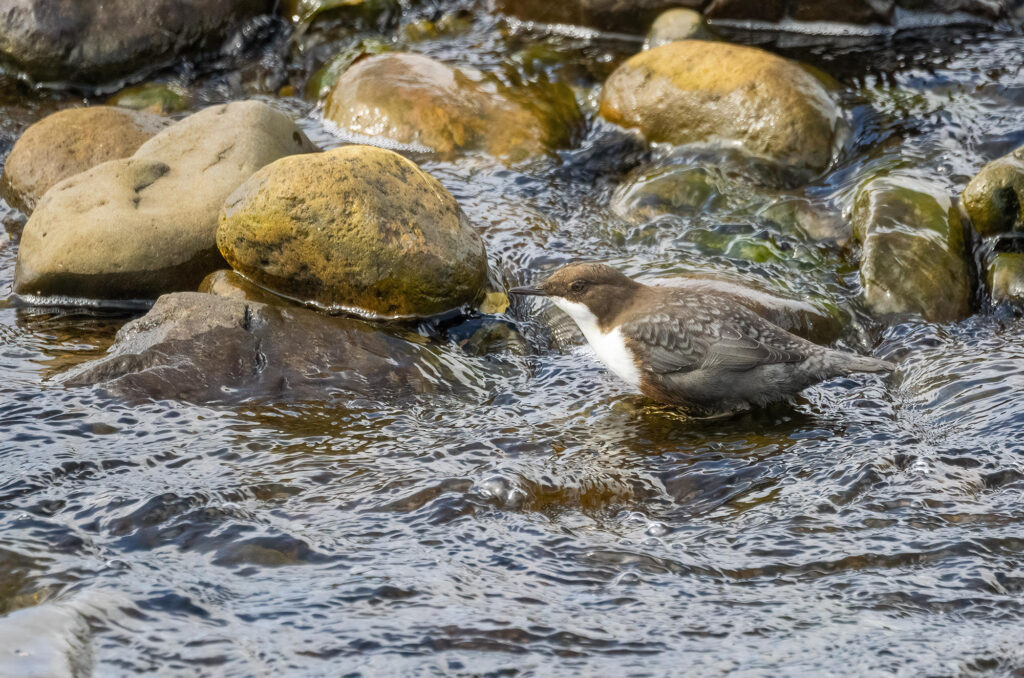
While I’ve had to photograph my local dippers on a dark burn, the dippers I photograph in Largs frequent a wider river that feeds into the Firth of Clyde. This spot on the Gogo Water has become a dipper hotspot for me, despite it being next to busy paths and an area where people often let their dogs play in the water. During my most recent visit in August, I spotted a dipper moving among the rocks. I used a slow and steady approach to get within shooting distance – stopping and capturing a few images before moving closer and repeating the process. I did this until I could sit down on the concrete bank – to get as low to the water as possible, for a bird’s eye view and to provide a bit of stability in the strong breeze.
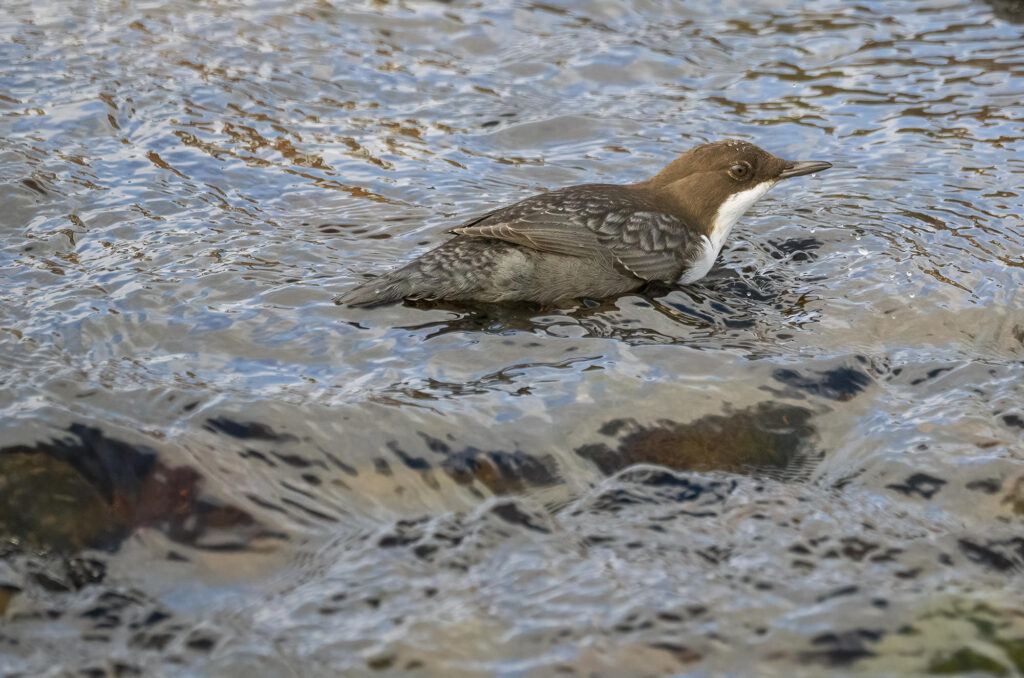
The dipper wasn’t bothered at all by me being there and just carried on with its search for food in the shallow water flowing around the rocks. I was able to capture some of my best dipper images during this encounter and also a short video (watch it below).
Current issues
Dippers may be a common species to spot on our rivers, but their connection to the quality of our waterways makes them vulnerable to habitat loss and pollution. With 75% of UK rivers posing a serious risk to human health, this dipping bird needs us to raise our game to achieve the improvement in water quality that both animals and people desperately need.

